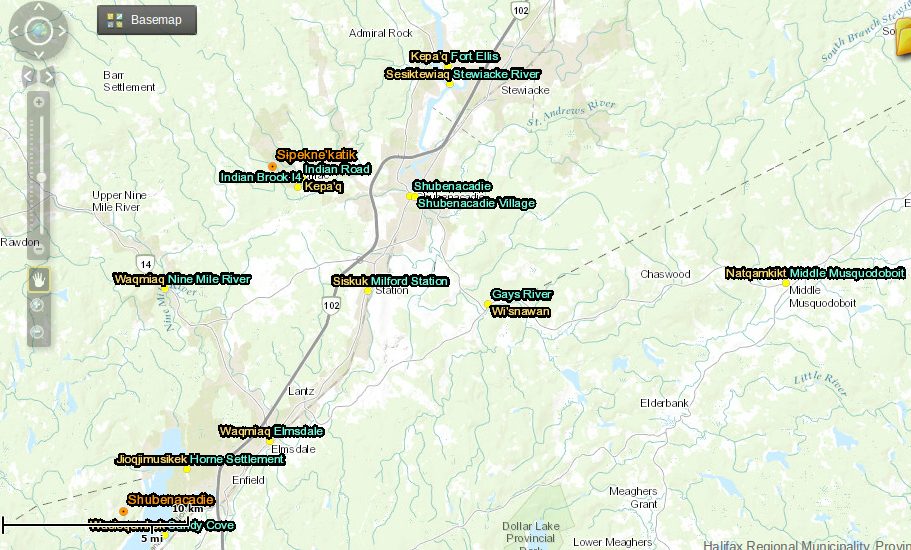
SEDABOOKTOOK (Guysborough) – I do not subscribe to the too-common practice of sanitizing or ignoring the past. I hope the following words will cause a (re)consideration and factual recognition for First Nations’ extensive history in our regions and country.
Many wrongs were committed against Indigenous people with racist practices still continuing. We cannot erase historical facts; however, we can take measures to deal with the results of our forebearers’ actions. It is our charge to display recognition of the truth regarding the treatment of First Nations’ people.
As an action towards reconciliation, communities should be incorporating First Nations names within their regional designations. Do we really need the massive number of streets named “Queen”, “Prince”, “Main” or all the other European, French, political, colonial or general-in-nature referencing identities? It is generally not my aim to change existing designations but, when possible, we should incorporate place names that recognize First Nations’ historical significance.
Today’s topic is due to an acquaintance commenting that my community of Guysborough was originally named by the Mi’kmaq as “Sedabooktook”. It is now identified in honour of a British military officer, Sir Guy Carlton, a constituent of colonizing forces which came to this land several hundred years ago and suppressed the people who lived here for 1000’s of years.
Anthropologists will tell us that the original inhabitants of North America migrated here 15,000 to 20,000 years ago therefore people from the regions now known as Europe were not the discoverers of “The New World” — as many would want us to believe and as most of our place names infer.
I was born in Bible Hill — definitely not a Mi’kmaq name — with its Colchester County neighbouring town, Truro, being named after the city of Truro in Cornwall, United Kingdom.
Debert, another Colchester County community, is an archeological Mi’kmaq site dating back 11,000 years that is more renowned for its World War Two military-training history with it too bearing a name of European origin.
With credit to Guysborough’s neighbouring town of Antigonish, according to the Wiktionary website, “Antigonish” is from the Mi’kmaq language: “The place where the tree branches are torn off by bears gathering beechnuts. Earlier spellings of the name (ca. 1600-1700) include ‘Artigounesche’ and ‘Antigoniche’”. However, despite its Mi’kmaq origin, Antigonish displays Gaelic names throughout its municipality thereby, I believe, implying a Celtic origin.
For recognition of a national scale, on January 1, 2021, Australia officially changed several words in its national anthem to reflect its indigenous people’s history. Dealing with the reality that its indigenous people are the oldest continued civilization in the world, Australia removed reference to the country being “young and free” and changed it to “for we are one and free”. When a country can use four words to recognize its Indigenous culture, surely Canadians too can make changes to our practices for establishing place names.
With many issues causing divisiveness within Canada and throughout the world, and with compromise being a trait of human survival and advancement, a gesture such as historical Mi’kmaq place-name recognitions should become a common practice exhibited by governments and communities. History cannot be changed but it can be truthfully recognized with positive outcomes via respectful actions.
Ray Bates, Guysborough (Sedabooktook: harbour running far back), a former school principal and Nova Scotia Community College Truro Campus faculty member (Ret’d), has been contributing his opinions to newspapers since 1998. raybates@eastlink.ca
See also: Ta’n Weji–sqalia’tiek: Website explores deep Mi’kmaq roots in our landscape
Check out our new community calendar!
With a special thanks to our generous donors who make publication of the Nova Scotia Advocate possible.
Subscribe to the Nova Scotia Advocate weekly digest and never miss an article again. It’s free!




Yes, the symbolism of using Mi’ kmaw place names would be a wonderful first start at reconciliation. I am also a proponent of incorporating some lessons of First People’s spiritualism and culture into our school ciriculum.
I remember when a native elder did an opening blessing at a halifax international conference on sustainability. It was beautiful and right on the mark. Humans, as a species, are most likely doomed to extinction but this is not because of the sustainable practices of our First Peoples. We need to begin to see the forests, lakes and rivers as more than just economic resources. They are also spiritual entities.
The deplorable actions of Forest Nova Scotia’s misinformation campaign on the Biodiversity Act is the latest example of what MUST change. Their mindset will kill us all. It’s most likely too late now but we HAVE to become aware.
Our European grand children are doomed to extinction too. It isn’t just an “environmental” issue or a “native rights” issue. Sustainability and reconciliation is as important as multiculturalism. It is urgent… for all of our relations.
Matt Dempsey